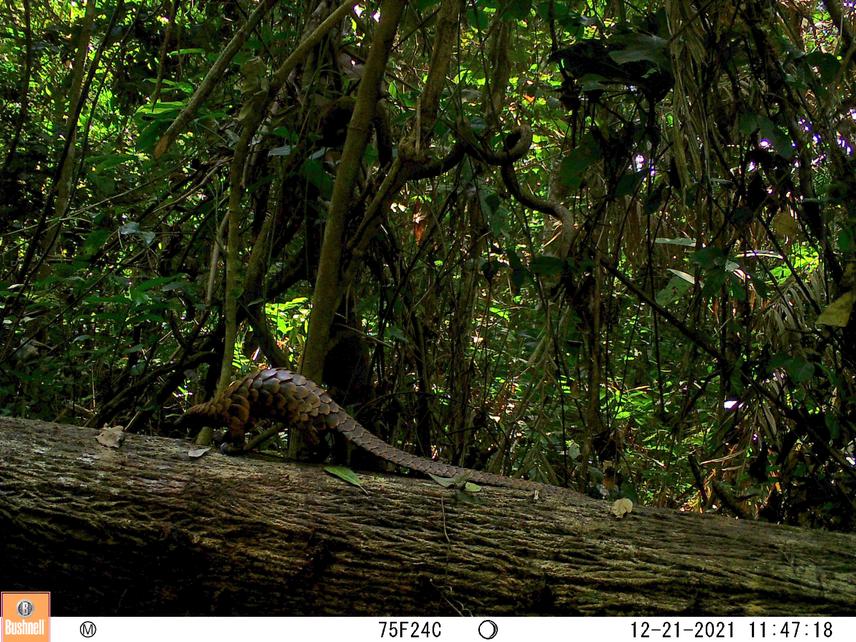Ghislain Difouo Fopa
Other projects
22 Jan 2019
Distribution, Habitat, and Food Preferences Assessment as Conservation Issue of Three Pangolins Species in Deng-Deng National Park (DDNP)
22 Feb 2024
Enhancing Pangolins’ Conservation in the Southern Cameroon Plateau: Population Status, and Community-Based Actions to Mitigating Threats
Rufford Small Grant funding permitted us to characterize six habitat types in Deng-Deng National Park; we successfully monitored these habitats using camera traps as well as we sampled termites and ants. During the second RSG, we will update the result of the camera traps recovery from the forest zone and analysed data; give food availability and diet composition. Moreover, we found that Deng-Deng national park has high level of disturbance by human activities. We propose to deplore grids of camera-traps to cover areas with habitat presenting different level of disturbance and raise awareness campaigns in several villages and provide recommendations.

Evidence of black-bellied pangolin presence in the surveyed area habitat.
Habitat loss and fragmentation are increasing threats to pangolins (Challender and Hywood 2012). Recently, we found that Deng-Deng national park has high level of disturbance by human activities; we have observed that anthropogenic activities could have an impact on pangolins population in this park (My previous RSG final report) situated in a forest and savannah intermediary zone (Dames & Moore 1999) offering homogeneity of habitat for pangolins. Our previous camera-trap surveys confirmed the presence of two pangolin species in this park and revealed that these savannah habitats might have low population of giant pangolin and white-bellied pangolin (RSG report 2019) since few detections were recorded, compared to the similar research that we carried out in another park (personal data, 2019).
However, anthropogenic activities might have an impact on pangolins population (Pietersen et al. 2019) and are influencing the population of pangolins in this park. The Deng-Deng national park has shown high level of disturbance by human activities including flooding due to hydroelectric dam construction, road construction and pipeline management (Author Rufford Small Grant final report).
To measure the impact of these threats, we propose to deplore grids of camera-traps to cover areas with habitat presenting different level of disturbance versus non-disturbed habitats to evaluate this impact and raise awareness campaign in important villages and provide recommendations.
This project will reveal status of new population of giant pangolin; providing factors that threaten the pangolin populations in this park which are not yet known but very important for in situ conservation actions. Then identify accurate habitat with more relevant parameters (e.g. hunting pressure, food requirement) where pangolins could be safely released during reintroduction programs in this park. Possible record of black-bellied pangolin: Probably we will record the black-bellied pangolin one of the rarest recorded pangolin species in Cameroon.
We will provide information on aspects of pangolin hunting pressure; and behaviour or opinion of local people towards concept and practices of conservation in this park to ensure that this park is safe area for conservation that can be recommended for sanctuaries establishment. Our data will provide major information necessary to develop sustainable management. Education in schools on pangolins conservation importance will be done.